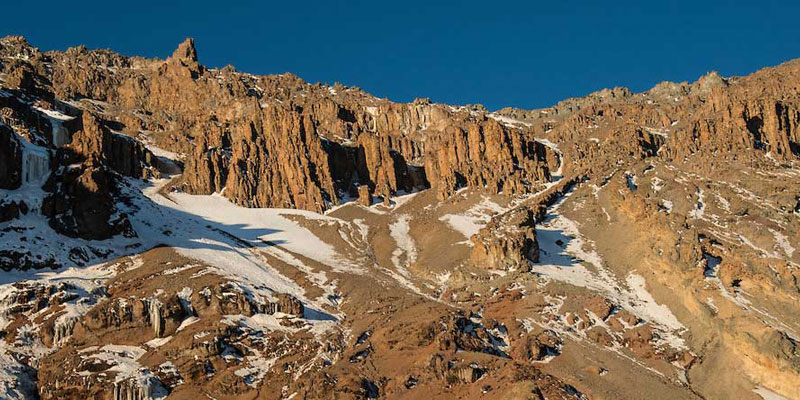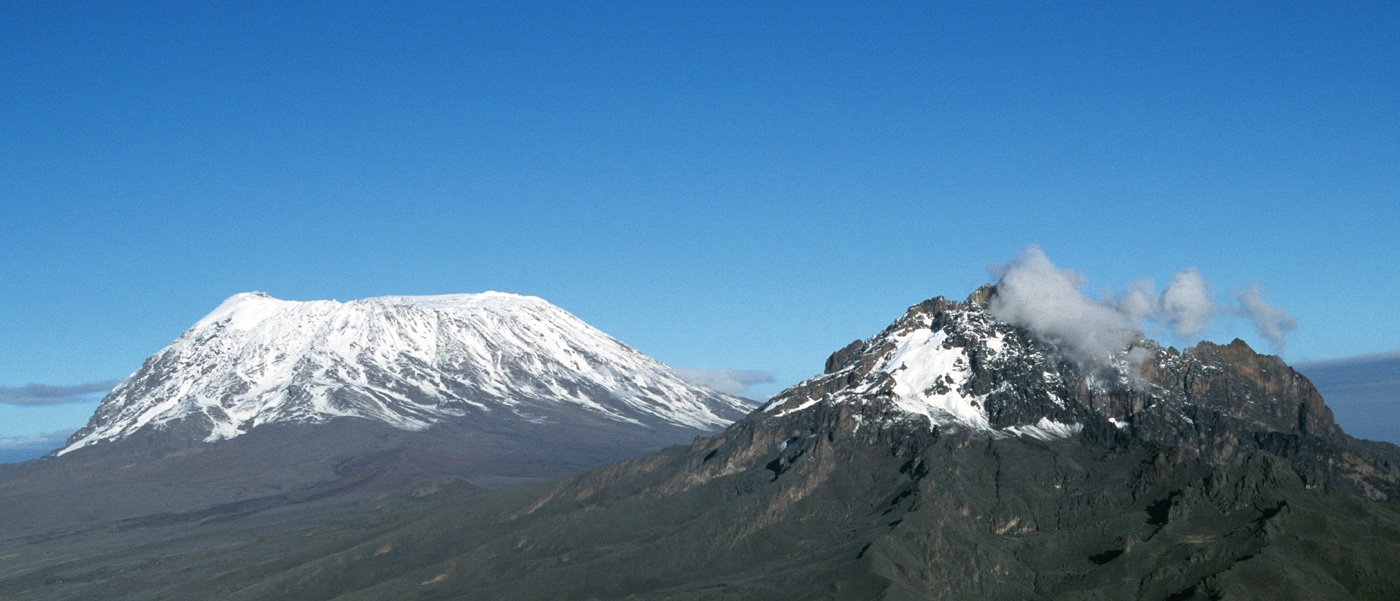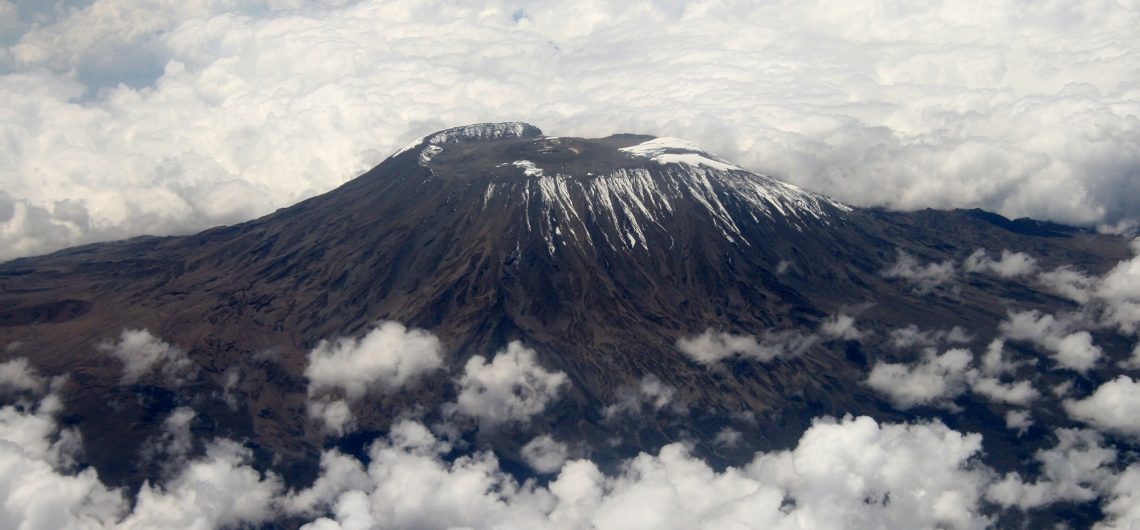How was Mount Kilimanjaro, a mountain that has distinct geology and history formed?.
Our planet’s surface is divided into several separate portions, some large and others little. Tectonic plates are what they’re called. Africa is one of the biggest continental plates on the planet.
The plates do not remain stationary; instead, they move around the earth’s surface, propelled by convection currents in the mantle. Some sink or subduct beneath others, others clash, and still, others split up. This is exactly what is going on in Africa.
In East Africa, the East African Rift Valley is a growing divergent plate boundary. The Somalian plate, which makes up the eastern half of Africa, is sliding away from the remainder of the continent, which is made up of the Nubian plate. A rift valley has resulted from this expansion. The crustal expansion has resulted in a succession of lengthy lowland valleys divided by highland areas.
Volcanoes develop when plates split apart, according to one of plate tectonics’ basic laws. This is why Kilimanjaro, as well as other well-known volcanoes like Ol Doinyo Lengai, exist.
Mount Kilimanjaro was produced as part of the Great Rift Valley’s creation. Volcanic activity focused on a few distinct places almost a million years ago. Kilimanjaro is really three volcanoes stacked on top of one another, rather than a single mountain summit. Shira, Mawenzi, and Kibo were formed roughly 3 million years ago with the formation of the Great Rift Valley.
Due to enormous forces that drove the crust skywards, Shira was the first to develop.
Shira collapsed to form a caldera around 500,000 years ago, while Mawenzi began to develop about 460,000 years ago. Kibo was produced by another eruption west of Mawenzi.
Shira, the lowest peak at 12,995 feet, last erupted half a million years ago and is now extinct. At 16,896 feet, Mawenzi is linked to the highest peak, Kibo, by a long ridge that gives Kilimanjaro’s top a “saddle” form.
Mawenzi and Shira are both extinct, however, Kibo is not. Kibo demonstrates it is still active, despite the fact that the most recent activity was roughly 200 years ago and the last major eruption was 360,000 years ago. It spews steam and sulphur into its 1 1/2-mile-wide crater, generating a series of collapses and landslides, the largest of which created the Western Breach. This stratovolcano will very certainly erupt again at some point in the future.
 Let’s have a look at the intriguing geological processes that lead to the construction of one of Africa’s most famous sites in the article below.
Let’s have a look at the intriguing geological processes that lead to the construction of one of Africa’s most famous sites in the article below.
How was Mount Kilimanjaro formed?
The geological history of Mount Kilimanjaro stretches back over three million years. (That’s right, 3,000,000 years!)
When Africa’s tectonic plates began to split three million years ago, the Great Rift Valley gave birth to this famous peak. The plates that cover the Earth’s surface are continually shifting. They leave unique geological marks in their trail as they go.
The Rift Valley: The Birthplace of Mount Kilimanjaro
To understand the origins of Mount Kilimanjaro, we must first delve into the geological marvel that is the East African Rift System. This massive rift, stretching over 3,000 kilometers (1,864 miles) from the Red Sea to Mozambique, is a result of tectonic plate movements that have shaped the landscape over millions of years.
Within this expansive rift, the Tanzanian Craton, a stable segment of the Earth’s crust, played a crucial role in the formation of Mount Kilimanjaro. As the rift system widened, the crust thinned, allowing magma from the Earth’s mantle to rise to the surface, initiating volcanic activity.
Volcanic Activity: The Building Blocks of Mount Kilimanjaro
Around one million years ago, the volcanic activity in the region gave birth to a series of volcanoes, including the precursors of Mount Kilimanjaro. These early volcanoes, known as Shira, Mawenzi, and Shira Plateau, served as the foundation upon which the current structure of Kilimanjaro would later form.
The volcanic eruptions, fueled by the rising magma, deposited layers upon layers of lava, ash, and volcanic debris over an extended period. As the magma solidified and cooled, it formed various types of volcanic rocks, such as basalt, trachyte, and phonolite, which can be found in different regions of the mountain today.
Formation of the Caldera: Birth of Kibo, the Highest Peak
Approximately 360,000 years ago, a massive eruption occurred, causing the collapse of the central portion of the volcano. This collapse created a large caldera, a vast crater-like depression, now known as the Kibo summit.
Within the caldera, subsequent volcanic eruptions gave rise to a new volcanic cone, aptly named Kibo. Over time, Kibo continued to grow, with additional layers of lava and volcanic material accumulating on top of the existing structure.
Shira and Mawenzi: The Other Peaks of Kilimanjaro
While Kibo took the spotlight as the highest peak, it is important to mention the other two volcanic cones that complete the unique profile of Mount Kilimanjaro.
To the west of Kibo lies Shira, the oldest of the three volcanic cones. It reached its maximum height around 500,000 years ago before collapsing, leaving behind the Shira Plateau. The remnants of Shira’s rim can still be observed today, serving as a testament to the mountain’s complex history.
Mawenzi, the third volcanic cone, stands to the east of Kibo and is the smallest and most rugged of the three. Though currently dormant, Mawenzi is an awe-inspiring sight, characterized by its sharp peaks, deep gorges, and picturesque valleys.
Glacial Sculpting: The Final Touches
While the volcanic activity shaped the foundation of Mount Kilimanjaro, the presence of glaciers added the final touch to its grandeur. During the last ice age, which occurred approximately 11,000 to 18,000 years ago, glaciers formed on the summit of Kilimanjaro, carving out its distinct features, such as the sharp peaks, cirques, and valleys.
However, due to climate change, these glaciers have been receding rapidly over the past century. Today, only a fraction of the glacial ice that once adorned Kilimanjaro remains, emphasizing the importance of conservation efforts and raising awareness about the impact of global warming.
The Formation of Mount Kilimanjaro: A Tectonic Journey
Mount Kilimanjaro’s formation can be attributed to a complex interplay of geological forces that have shaped the Earth’s crust. Let’s delve deeper into the captivating processes that led to the creation of this remarkable stratovolcano.
1. Tectonic Plate Movements
Mount Kilimanjaro is located in northeastern Tanzania, near the border with Kenya. It is situated within the East African Rift System, which is a result of the ongoing divergence between the African Plate and the Somali Plate. As these plates separate, the Earth’s crust fractures, leading to the formation of a network of faults and fissures in the region.
2. Magma Generation and Upwelling
The process of plate divergence creates pathways for molten rock, known as magma, to rise from the Earth’s mantle towards the surface. The upwelling of magma is driven by the intense heat within the Earth and the reduction of pressure as the plates separate. The magma accumulates in underground chambers known as magma reservoirs.
3. Formation of a Stratovolcano
As the magma rises through the fractures and reaches the surface, volcanic eruptions occur. The eruptions release lava, ash, and gases, which accumulate over time and form layers of volcanic material. These successive eruptions, along with periods of volcanic dormancy and erosion, contribute to the formation of a stratovolcano like Mount Kilimanjaro. Stratovolcanoes are characterized by their steep slopes and conical shape, resulting from the alternating layers of solidified lava, ash, and pyroclastic deposits.
4. Erosion and Glacial Activity
While volcanic activity plays a significant role in the formation of Mount Kilimanjaro, the forces of erosion and glacial activity have also shaped its features. Over thousands of years, the movement of glaciers and the actions of wind, water, and ice have sculpted the mountain’s slopes and valleys, creating its distinct appearance.
The Geologic Features of Mount Kilimanjaro
Beyond its formation, Mount Kilimanjaro exhibits a range of captivating geologic features that add to its allure. Let’s explore some of the remarkable aspects of this stratovolcano.
1. Three Volcanic Cones
Mount Kilimanjaro is composed of three distinct volcanic cones: Kibo, Mawenzi, and Shira. Kibo is the highest peak and the main volcanic cone, while Mawenzi and Shira are older cones that are now dormant. Each cone has its unique characteristics, contributing to the overall grandeur of the mountain.
2. Glacial Features
The summit of Mount Kilimanjaro is adorned with glaciers, a rare and striking feature for a tropical mountain. These glaciers have been gradually receding over the years due to climate change, but they still add a sense of beauty and wonder to the mountain’s landscape.
3. Volcanic Ash and Lava Flows
Evidence of past volcanic activity can be seen in the layers of volcanic ash and lava flows that blanket the slopes of Mount Kilimanjaro. These layers provide insights into the volcano’s eruptive history and the composition of its eruptions.
4. Ecological Diversity
Mount Kilimanjaro is renowned for its ecological diversity, with distinct vegetation zones as you ascend the mountain. From lush rainforests to moorlands and alpine deserts, the varying environments support a wide range of flora and fauna, making the mountain a haven for biodiversity.
How was the Greater Rift Valley formed?
Two African plates in particular spring to mind when thinking about Mount Kilimanjaro and the Greater Rift Valley: the Somalian Plate and the Nubian Plate. The Greater Rift Valley was formed three million years ago as the Somalian Plate began to drift and draw away from the Nubian Plate.
Mount Kilimanjaro arose as the ground began to move and the Greater Rift Valley took shape. As portions of the Earth began to collapse and compress into the valley, other parts of the Earth began to shoot skyward, generating volcanoes.
Africa’s tallest mountain would be formed by three volcanoes in particular.
Shira, Mawenzi, and Kibo Volcanic Peaks
Mount Kilimanjaro’s three volcanoes began to develop with the formation of the Greater Rift Valley. Over the following two and a half million years, the three volcanoes continued to grow, and eruptions gave rise to Mount Kilimanjaro as we know it today.
Shira, the earliest of these volcanoes to erupt, would finally collapse some 500,000 years ago, giving birth to Mawenzi nearly 40,000 years later. Later eruptions gave rise to Kibo, which is today the tallest peak on the mountain.
I get what you’re thinking: who hikes on a volcano? But don’t be concerned about eruptions throughout your trip. Experts believe Shira and Mawenzi are both extinct, while Kibo is dormant. In fact, Kibo hasn’t erupted in a big eruption in almost 350 years!

Conclusion
Mount Kilimanjaro formed three million years ago when two major African tectonic plates shifted. Mount Kilimanjaro originated as part of the Greater Rift Valley during this time, and was made up of three different volcanoes!
Shira, the highest and oldest, reaches a height of 12,995 feet. The second volcano to erupt, Mawenzi, is a little higher, reaching a height of 16,896 feet. Both, however, pale in contrast to Kibo, the legendary African mountain’s last volcano, which stands at 19,341 feet tall.
Both, however, pale in contrast to Kibo, the legendary African mountain’s last volcano, which stands at 19,341 feet tall.
The formation of Mount Kilimanjaro is a testament to the powerful forces that shape our planet. From the birth of the East African Rift System to the volcanic eruptions that built its foundation, and the glacial sculpting that added the finishing touches, every step of the mountain’s formation tells a compelling story.
Visiting Mount Kilimanjaro is not only an opportunity to witness its awe-inspiring beauty but also a chance to connect with the Earth’s geological history. As we continue to explore and appreciate this natural wonder, let us strive to protect and preserve it for future generations.
In this sense, it may be simpler to envision Mount Kilimanjaro as three different volcanic peaks stacked on top of one another, rather than a single mountain. Its legendary height, striking appearance, and tourist attractiveness are due to its unique structure.
![]()


Comments